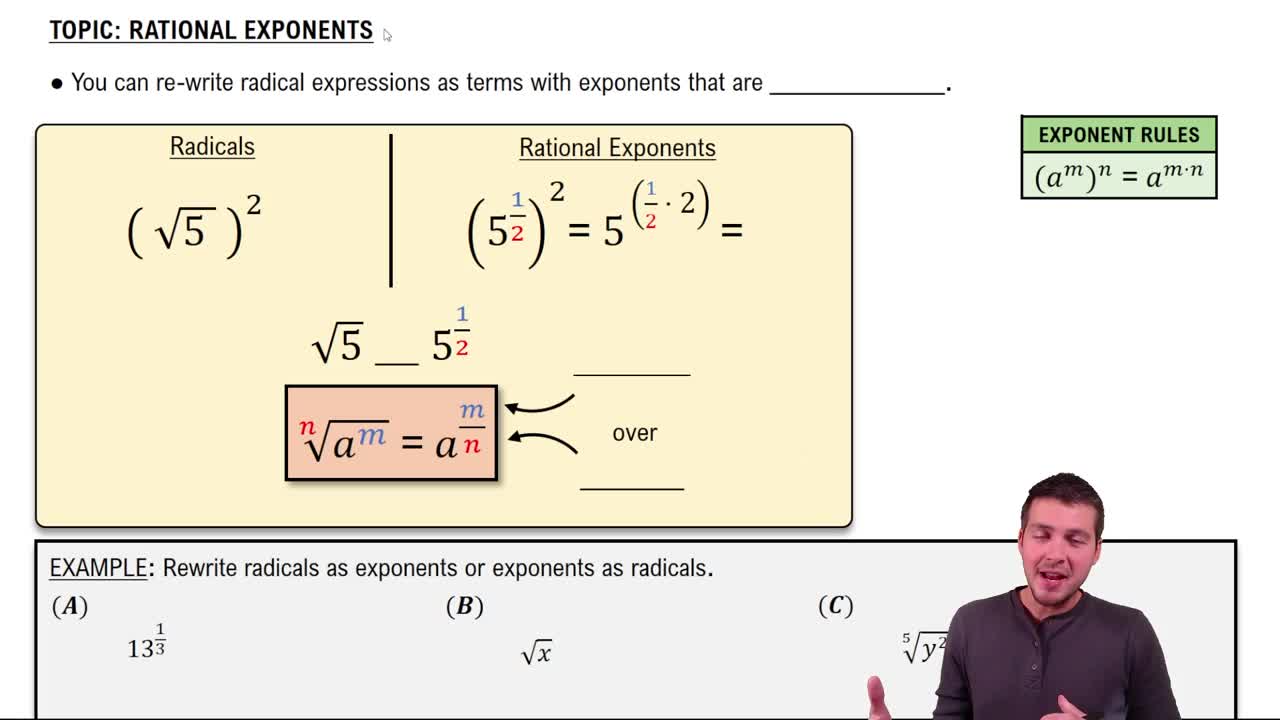Here are the essential concepts you must grasp in order to answer the question correctly.
Radical Simplification
Radical simplification involves reducing a radical expression to its simplest form. This process includes identifying perfect squares within the radicand (the number or expression inside the radical) and extracting them outside the radical. For example, √24 can be simplified by recognizing that 24 = 4 × 6, where 4 is a perfect square.
Recommended video:
Properties of Exponents
Understanding the properties of exponents is crucial for simplifying expressions involving variables. For instance, when simplifying m⁶, we can express it as (m³)², allowing us to take m³ outside the radical. This property helps in managing the powers of variables when they are part of a radical expression.
Recommended video:
Combining Radicals
Combining radicals refers to the process of merging like terms after simplification. When simplifying expressions like √(a) + √(a), we can combine them into a single radical. This concept is essential for ensuring that the final expression is as concise as possible, which is a key goal in radical simplification.
Recommended video:
 Verified step by step guidance
Verified step by step guidance Verified Solution
Verified Solution

